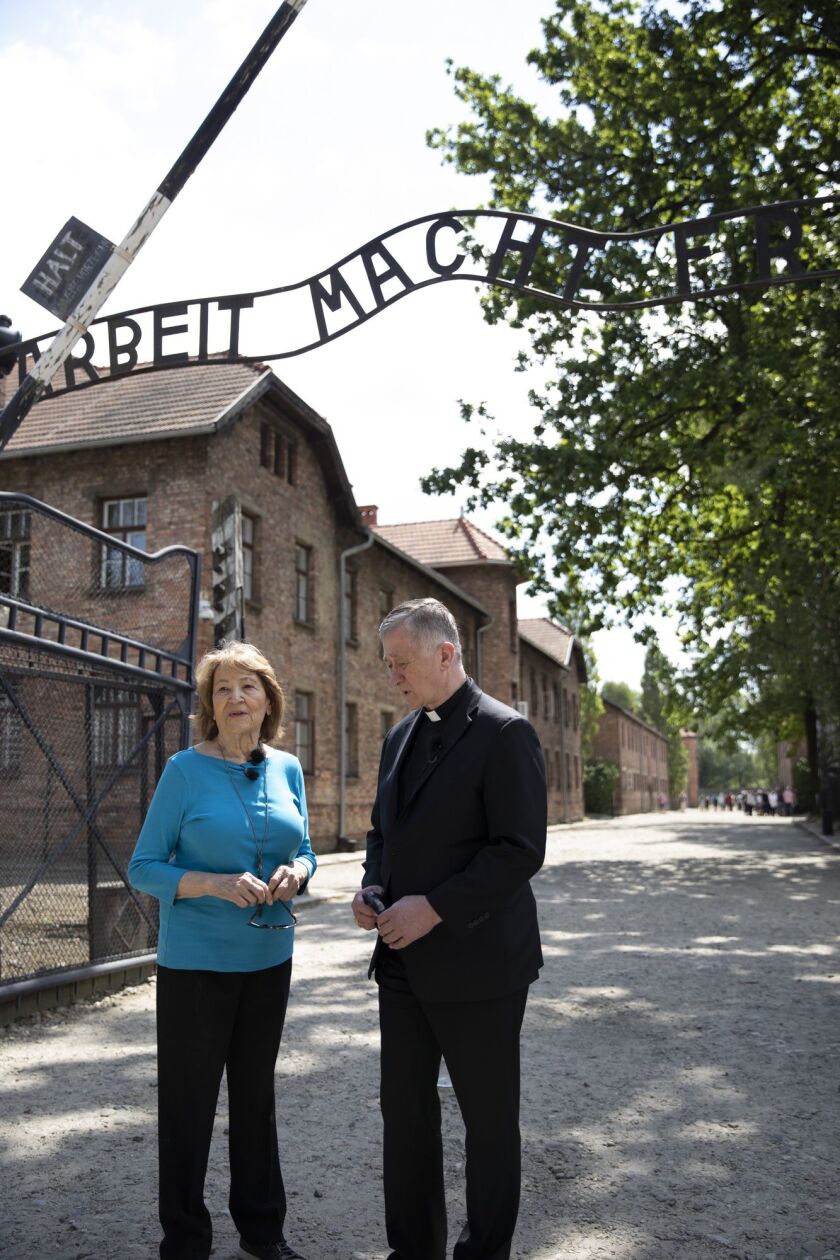Fritzie Fritzshall, a Holocaust survivor who dedicated her life to cataloguing its atrocities and fighting bigotry, has died at 91.
When Fritzshall was just 13, the Nazis invaded her hometown in Czechoslovakia and sent the young Jew and her family to the Auschwitz concentration camp in German-occupied Poland.
Unlike many of her loved ones, Fritzshall survived Auschwitz and later moved to Skokie after World War II. That’s where she committed herself to educating others about the horrors she witnessed and ultimately led the Illinois Holocaust Museum and Education Center for over a decade.
Marcy Larson, a spokeswoman for the Holocaust museum, confirmed Fritzshall’s death this weekend. “The world has lost a tremendous person,” Larson said Sunday.
“She put herself out there,” Larson said. “It was difficult for her to tell that story over and over, but she recognized the importance of it.”
Fritzshall often recounted her family’s harrowing train ride to Auschwitz, which claimed the life of her grandfather. Her mother, two brothers and other family members were later killed at the camp, along with more than 1 million others.
Fritzshall was only able to survive by pretending she was older, following advice from a fellow Jew charged with clearing the trains arriving at Auschwitz.
“They walked amongst us and in Yiddish would whisper to a child, ‘You’re 15. Remember you’re 15,’” she said of the Jewish workers in an archived video. “When we got off the train, they asked us to line up according to age. I lined up, and I became 15 years old. I lined up with the 15-year-olds, and I truly believe that that man, whoever he was, saved my life.”
Gov. J.B. Pritzker, the chief fundraiser for the Holocaust museum, recalled that story while memorializing Fritzshall this weekend. He noted she “wanted us to know that there are good people everywhere.”
“Fritzie was that person who made a difference for many,” Pritzker said in a statement Saturday. “She embodied the decency and kindness she implored from others. She was strong and faithful and caring. A fundamentally good person is gone today.”
Fritzie Fritzshall, my friend, is gone.
— Governor JB Pritzker (@GovPritzker) June 20, 2021
“One person can make a difference,” she always said.
She embodied the decency and kindness she implored from others. She was strong, faithful & caring. A fundamentally good person is gone today. I miss her already & will never forget her. pic.twitter.com/IkHyux7PpR
After she was sent to perform slave labor in a related German factory, Fritzshall was freed by Soviet troops in 1945 when she escaped during a death march. At that point, she made it her mission to give voice to the 599 other women at the labor camp, Larson said.
“They gave her a crumb of bread every day because she was the youngest,” Larson added. “They said, ‘If you survive, you will tell our story.’”
Fritzshall moved to Skokie the following year and was reunited with her father, who had immigrated to the United States before the Holocaust, hoping to provide a better life for his family.
After marrying a war veteran and starting a career as a hairdresser, Fritzshall was pushed into activism in the late 1970s when a neo-Nazi group announced plans to march through the heart of Skokie, which has a large Jewish population. That threat led to the creation of the Holocaust Memorial Foundation of Illinois, the organization that now runs the Holocaust museum in Skokie.
In 1990, Fritzshall and other Holocaust survivors also successfully lobbied for a state law that requires public schools to teach about the Holocaust. And roughly two decades later, the museum opened as a hub for Holocaust education.
But Larson noted that Fritzshall was still “very worried that people would forget Auschwitz.” That fear pushed Fritzshall to relive her “horrific past” in 2019, when she traveled to the camp to shoot a virtual reality film that’s slated to premiere at the museum this year, Larson said.
During Fritshall’s tenure, the museum often took an innovative approach to educating about the Holocaust, including developing three-dimensional holograms of survivors as a means of preserving their stories.
“She embraced storytelling in all its forms because she recognized that people absorb information differently and that technology continued to advance to tell her story in more and more impactful ways,” Larson said.
Former Mayor Rahm Emanuel and Cardinal Blase Cupich, who visited Auschwitz with Fritzshall in 2019, were among the notable figures who publicly mourned her death.
“The world lost a clarion voice against bigotry and hatred, and I lost a good friend,” Cupich tweeted Saturday. “By bravely sharing her story, Fritzie inspired us and now it is up to us to make sure her work lives on and the world never forgets the Holocaust.”
Fritzshall, who lived in the northwest suburbs, is survived by her son Steve, daughter-in-law Hinda and her grandsons, Scott and Andy.






